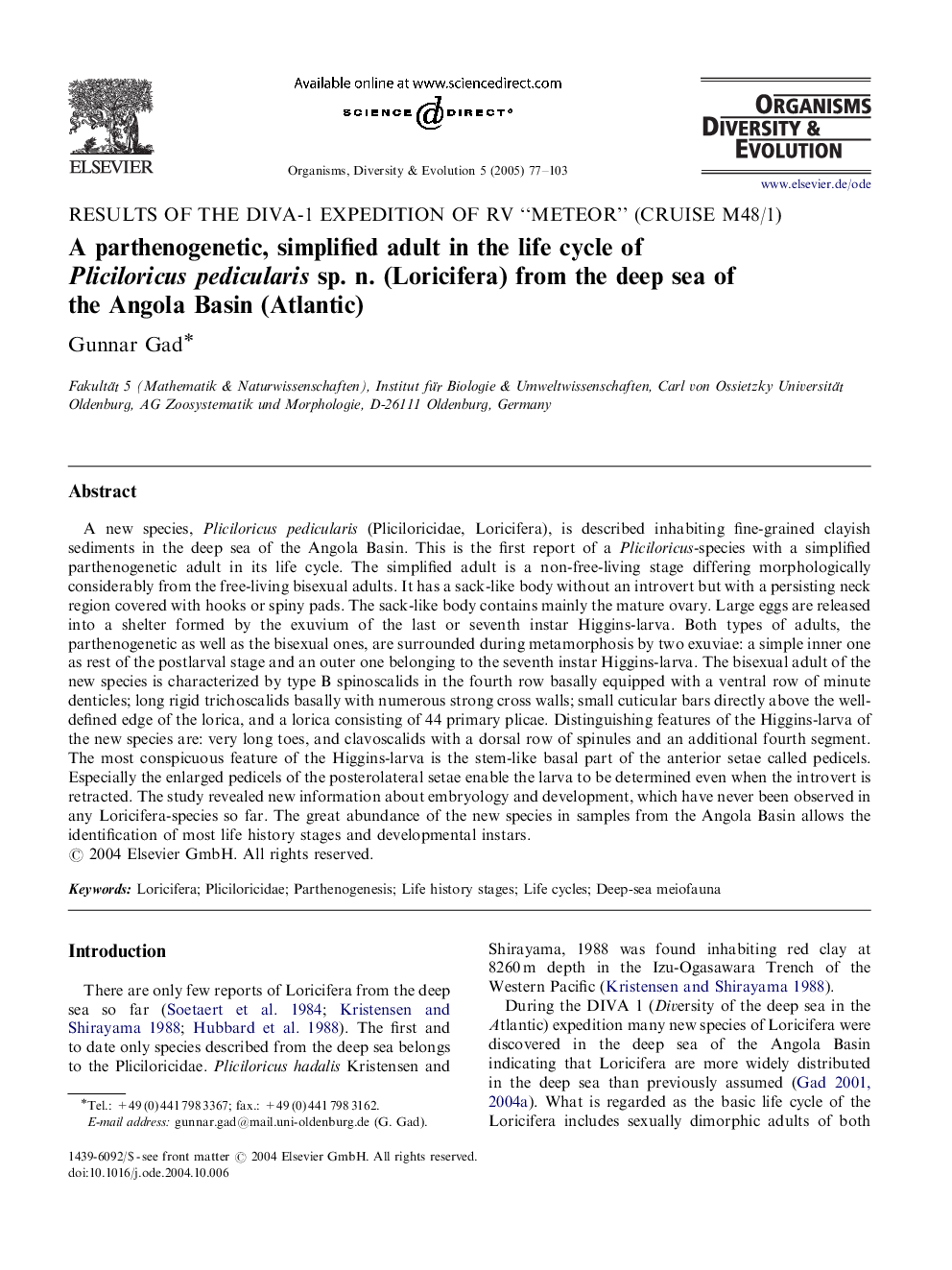| Article ID | Journal | Published Year | Pages | File Type |
|---|---|---|---|---|
| 9461470 | Organisms Diversity & Evolution | 2005 | 27 Pages |
Abstract
A new species, Pliciloricus pedicularis (Pliciloricidae, Loricifera), is described inhabiting fine-grained clayish sediments in the deep sea of the Angola Basin. This is the first report of a Pliciloricus-species with a simplified parthenogenetic adult in its life cycle. The simplified adult is a non-free-living stage differing morphologically considerably from the free-living bisexual adults. It has a sack-like body without an introvert but with a persisting neck region covered with hooks or spiny pads. The sack-like body contains mainly the mature ovary. Large eggs are released into a shelter formed by the exuvium of the last or seventh instar Higgins-larva. Both types of adults, the parthenogenetic as well as the bisexual ones, are surrounded during metamorphosis by two exuviae: a simple inner one as rest of the postlarval stage and an outer one belonging to the seventh instar Higgins-larva. The bisexual adult of the new species is characterized by type B spinoscalids in the fourth row basally equipped with a ventral row of minute denticles; long rigid trichoscalids basally with numerous strong cross walls; small cuticular bars directly above the well-defined edge of the lorica, and a lorica consisting of 44 primary plicae. Distinguishing features of the Higgins-larva of the new species are: very long toes, and clavoscalids with a dorsal row of spinules and an additional fourth segment. The most conspicuous feature of the Higgins-larva is the stem-like basal part of the anterior setae called pedicels. Especially the enlarged pedicels of the posterolateral setae enable the larva to be determined even when the introvert is retracted. The study revealed new information about embryology and development, which have never been observed in any Loricifera-species so far. The great abundance of the new species in samples from the Angola Basin allows the identification of most life history stages and developmental instars.
Related Topics
Life Sciences
Agricultural and Biological Sciences
Animal Science and Zoology
Authors
Gunnar Gad,
